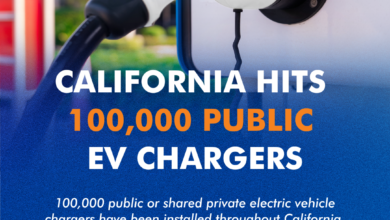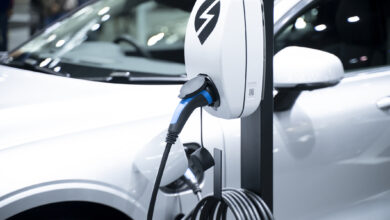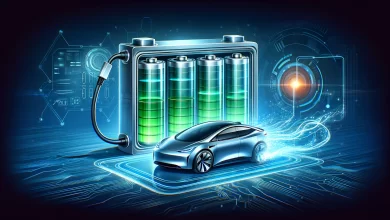BYD, VW, and Stellantis Turn Up the Heat on Tesla With Better Plug-in Hybrids and Cheaper EVs

Global auto makers are unveiling better cars and technologies in what is becoming an industry that has become more complicated and competitive every day.
On Tuesday, Chinese electric-vehicle maker
unveiled the fifth generation of its plug-in hybrid technology that can travel about 800 miles on one tank of gas and one battery charge.
That’s a long way. The size of the car, the size of the gas tank, battery quality, and motor integration all play a role in boosting efficiency.
BYD makes only electrified cars, either all-battery electric or plug-in hybrid models. Its cheap EVs have gotten the attention of rivals looking to defend market share outside of China.
also on Tuesday, announced plans to launch a €20,000 ($21,600) all-electric vehicle in Europe by 2027. That decision comes months after BYD cut the price of its Seagull EV to $10,000 in China. BYD sells that model in Mexico and Brazil, but the Seagull starts north of $20,000 in those markets. BYD has acknowledged that its cheapest cars will cost more overseas because of local safety regulations, and feature expectations.
Advertisement – Scroll to Continue
BYD has labor cost advantages in building cars in China. It also makes its own batteries. VW is planning to produce low-cost EVs in Europe.
“It’s about entry-level electric mobility from Europe for Europe,” Volkswagen CEO Oliver Blume said in a news release. “In doing so, we combine a clear commitment to Europe as an industrial location, a European industrial policy and ultimately act in the interests of European customers.”
Not to be outdone,
CEO Carlos Tavares talked about plans to launch a $25,000 Jeep EV in the U.S. “In the same way we brought the 20,000 euro Citroen e-C3, you will have a $25,000 Jeep very soon,” he said Wednesday during a Bernstein investor conference. “We are using the same expertise because we are a global company and this is totally fluid across the engineering world of Stellantis.”
The low-price Volkswagen EVs should arrive a year or two after
Advertisement – Scroll to Continue
launches its low-price EV early in 2025. Tesla recently accelerated the development of a cheaper EV amid slowing demand growth for its cars, and EVs overall.
Tesla delivered about 387,000 vehicles in the first quarter, down about 9% year over year. The decline came as overall U.S. EV growth slowed from more than 40% in the fourth quarter of 2023 to just 3% in the first quarter of 2024.
Volkswagen and BYD announcements came just as
announced plans on Tuesday to develop motors that work with different fuels such as compressed natural gas and hydrogen.
Advertisement – Scroll to Continue
A few years ago, auto makers were spending R&D dollars on more-efficient gasoline engines. Now they have to develop batteries, electric motors, and a wider range of gasoline engines that can all work together.
“The powertrain conundrum [has] thrown product plans up in the air,” says BofA Securities analyst John Murphy. Building multiple powertrains “isn’t good for the economics of the business.”
R&D spending can pinch profit margins. For fiscal 2025, Toyota recently said operating profit would drop 20% as it ramps up tech investments. Toyota expects to earn about $27.5 billion in operating profit for the year. When guidance was given in early May, Wall Street had expected closer to $35 billion.
BYD stock rose 5.3% in overseas trading on Wednesday. Volkswagen and Toyota shares fell 2% and 1.7%, respectively.
Tesla shares were up 0.2% in late trading at $177.04 while the
and
Advertisement – Scroll to Continue
were down 0.5% and 0.3%, respectively.
Write to Al Root at allen.root@dowjones.com



